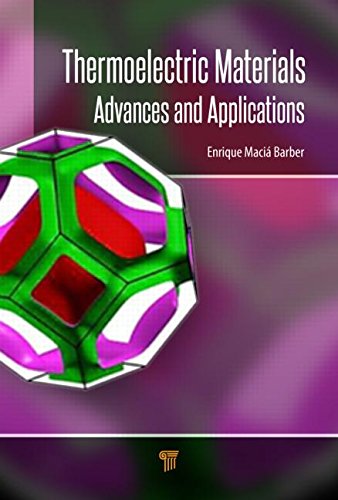

Most ebook files are in PDF format, so you can easily read them using various software such as Foxit Reader or directly on the Google Chrome browser.
Some ebook files are released by publishers in other formats such as .awz, .mobi, .epub, .fb2, etc. You may need to install specific software to read these formats on mobile/PC, such as Calibre.
Please read the tutorial at this link: https://ebookbell.com/faq
We offer FREE conversion to the popular formats you request; however, this may take some time. Therefore, right after payment, please email us, and we will try to provide the service as quickly as possible.
For some exceptional file formats or broken links (if any), please refrain from opening any disputes. Instead, email us first, and we will try to assist within a maximum of 6 hours.
EbookBell Team

4.4
52 reviewsEnvironmental and economic concerns have significantly spurred the search for novel, high-performance thermoelectric materials for energy conversion in small-scale power generation and refrigeration devices. This quest has been mainly fueled by the introduction of new designs and the synthesis of new materials. In fact, good thermoelectric materials must simultaneously exhibit extreme properties: they must have very low thermal conductivity values and both electrical conductivity and Seebeck coefficient high values as well. Since these transport coefficients are interrelated, the required task of optimization is a formidable one. Thus, thermoelectric materials provide a full-fledged example of interdisciplinary research connecting fields such as solid-state physics, materials science engineering, and structural chemistry and raise the need of gaining proper knowledge of the role played by the electronic structure in the thermal and electrical transport properties of solid matter.
This book presents a detailed, updated introduction to the field of thermoelectric materials in a tutorial way, focusing on both basic notions and fundamental questions and illustrating the abstract concepts with suitable application examples. It discusses thermoelectric effects, the transport coefficients and their mutual relations, the efficiency of thermoelectric devices, and some notions on the characterization and related industry standards. It also reviews the two basic strategies for optimizing the thermoelectric performance of materials: the control of thermal conductivity and the power factor enhancement. It discusses structural complexity approach, focusing on complex enough lattice structures with heavy atoms in the unit-cell or nanostructured systems characterized by low-dimensional effects, and introducing different kinds of bulk materials of growing chemical and structural complexity. It also discusses the electronic structure engineering approach that focuses on obtaining a guiding principle, in terms of an electronic band structure tailoring process, and describes the role played by the electronic structure in the thermoelectric performance of different materials.